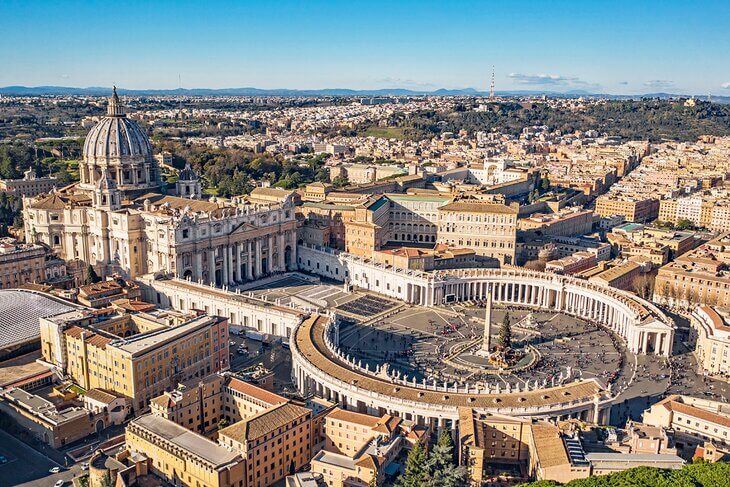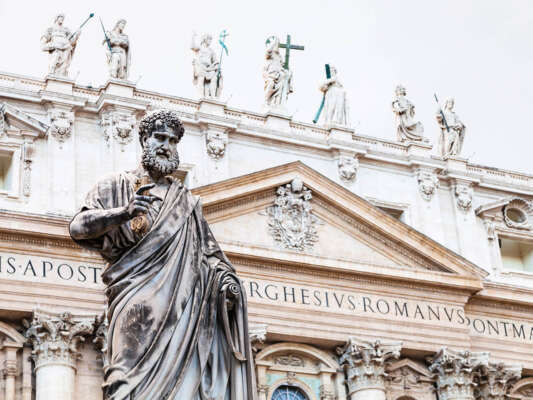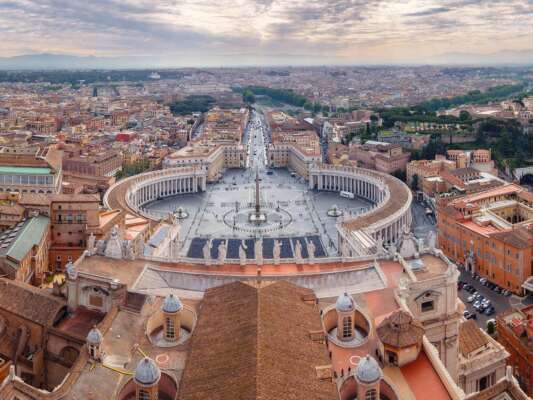In this free audio guide, you will learn about the holy Vatican City (Rome). The Vatican City is located in the center of Rome, Italy. It is a landlocked independent country within Rome, Italy. It’s the smallest country in the world (by area and population) and the only absolute monarchy in Europe.
Vatican City – Free Audio Guide 🎧
🎧 Vatican City – Free Audio Guide
Duration: ~20 minutes (5 parts)
Press Play or choose any chapter below:
Updated: 26 October 2025
Editor’s Choice
The Eiffel Tower in Paris – Free Audio Guide
Milan’s Cathedral Free Audio Guide
Colloseum Free Audio Guide
Things to know about the Vatican City 🎓
Vatican City (or officially: the Vatican City State) is a landlocked independent country, within Rome, Italy. It’s the smallest country in the world (by area and population) and the only absolute monarchy in Europe.
In this audio guide, we will talk about the most unique country in the world – Vatican City, its history, how it functions, what you can see and do there, exciting facts, and of course, travel tips.
The name Vatican City was first used in 1929, which established the modern city-state, named after the geographic location – Vatican Hill within the city of Rome. The word “Vatican” itself is derived from the name of an Etruscan settlement, Vatica (or Vaticum).
The total area of Vatican City is just half a square kilometer (or 0.19 square miles). And the population (as of 2023) is just 764 residents. It’s the smallest country in the world. But it has all the attributes of an independent country: flag, anthem, state emblem, government, economy, police, diplomacy, etc.
(Source of data: Wikipedia)
Quick Takeaways & Fun Facts 📝
- Vatican City is the smallest country in the world both by territory and population.
- At the same time, St. Peter’s Basilica is the largest Christian church in the world.
- The same is true about the Vatican Museums – they are among the world’s largest and most significant art collections.
- It’s the only independent state in the world that is entirely surrounded by another country (Italy).
- The Vatican is officially a Unitary theocratic Catholic elective absolute monarchy. It’s the only absolute monarchy in Europe and 1 of 13 absolute monarchies in the world.
- The Pope is elected in a papal conclave in the Sistine Chapel.
- Vatican City has no hospitals, schools, or commercial businesses. As a result, it has no permanent residents. The only people who reside there are Vatican citizens, who are primarily clergy and diplomats.
- Latin is the official language of Vatican City, used for official documents and religious services. However, Italian is also widely spoken and used in daily life.
- Vatican City has its own postal service and issues its own postage stamps. Collecting Vatican stamps is a popular hobby among philatelists.
- -The Swiss Guard, with its distinctive Renaissance-style uniforms, is responsible for the security of Vatican City and the Pope. It is one of the oldest and smallest standing military forces in the world.
- Vatican City has no prison system. Under the terms of the Lateran Treaty (1929), Italy will, at the request of the Holy See, punish individuals for crimes committed within Vatican City
- In the center of St. Peter’s Square, there is a more than 4 thousand-year-old original Egyptian Obelisk.
FAQ – Vatican City Free Audio Guide 🧠
1. What is Vatican City?
Vatican City is an independent city-state enclaved within Rome, Italy. It’s the smallest country in the world by both area and population and serves as the spiritual and administrative center of the Roman Catholic Church.
2. Why is Vatican City considered a country?
Vatican City became an independent state in 1929 under the Lateran Treaty between the Holy See and Italy. It has its own flag, laws, currency, and diplomatic relations, making it a fully sovereign entity.
3. Who rules Vatican City?
Vatican City is ruled by the Pope, who holds supreme legislative, executive, and judicial authority. It’s the only absolute monarchy in Europe and one of just thirteen in the world.
4. What language is spoken in Vatican City?
Latin is the official language used for Church documents and liturgy. Italian is the working language used in daily communication and administration.
5. What can I see in Vatican City?
Major landmarks include St. Peter’s Basilica, St. Peter’s Square, the Sistine Chapel, and the Vatican Museums, which house one of the world’s largest art collections.
6. How big is Vatican City?
The total area of Vatican City is about 0.49 square kilometers (0.19 square miles) — roughly one-eighth the size of New York’s Central Park.
7. How many people live in Vatican City?
As of 2023, Vatican City has around 764 residents, most of whom are clergy, members of the Swiss Guard, and diplomats. There are no permanent civilian citizens.
8. Does Vatican City have its own military?
Yes. The Swiss Guard, founded in 1506, protects the Pope and the Apostolic Palace. It’s one of the world’s oldest standing military units.
9. Can tourists visit Vatican City?
Yes. Visitors can freely enter St. Peter’s Basilica, St. Peter’s Square, and buy tickets to the Vatican Museums and Sistine Chapel. However, some areas are restricted to clergy and officials.
10. Does Vatican City have a postal system?
Yes. Vatican City has its own postal service and issues its own postage stamps, which are highly valued by collectors.




